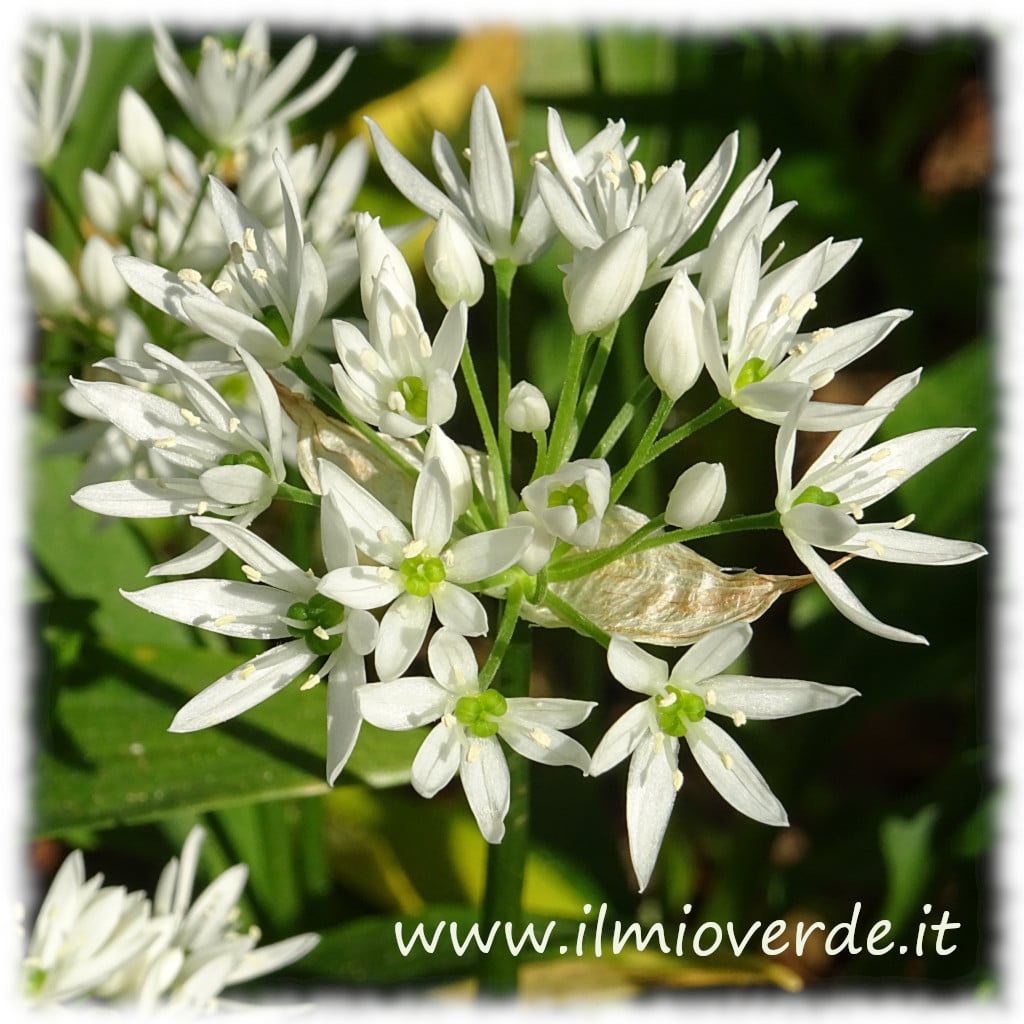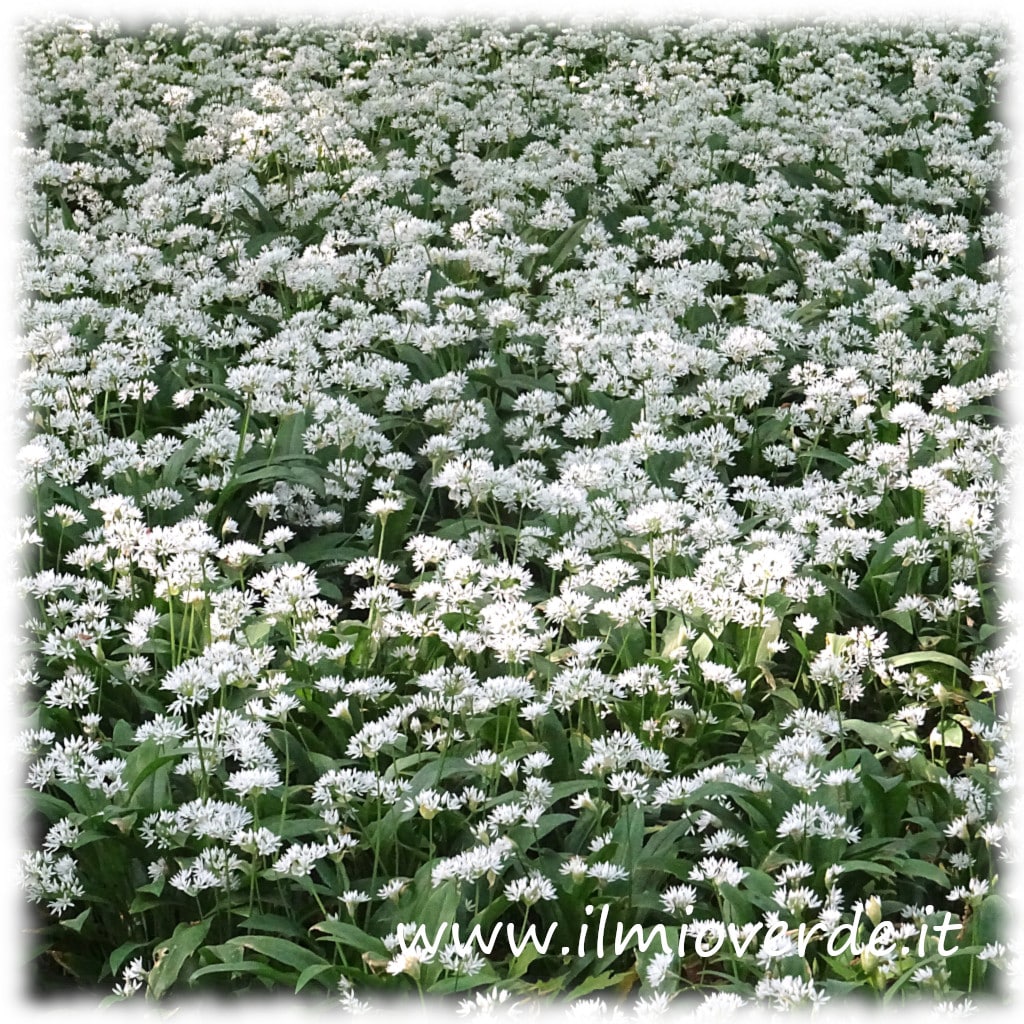Allium ursinum
The scientific name Allium ursinum originates from the Latin word ursus, meaning “bear.” It is said that bears, upon emerging from hibernation, would seek out this plant to cleanse their bodies and regain strength. Wild garlic has been known for centuries for its health benefits and is widely used both in cooking and herbal medicine.
Description
Wild garlic is a perennial herbaceous plant native to the moist, shady woodlands of Europe and Asia. It is characterised by its broad, lance-shaped, bright green leaves and a strong garlic aroma. The flowers, grouped in umbels, are small, white, and six-petalled, blooming in spring.
Characteristics
- Height: 20–50 cm.
- Leaves: Long, broad, with a sheathing base.
- Flowers: Small, white, star-shaped.
- Bulb: Small, oblong, similar to common garlic.
Flowering
Wild garlic blooms between April and June. During this period, the woodlands are carpeted in white and filled with the distinctive scent of garlic.
Climate and Exposure
Wild garlic prefers a temperate climate and thrives in damp, shady locations, often in deciduous woodlands. It favours indirect light and tolerates cool, shaded areas well.
Soil
The ideal soil for wild garlic is rich in organic matter, well-draining, and with a neutral to slightly acidic pH. Compact or nutrient-poor soils may hinder its growth.
Watering and Fertilisation
Being a self-sustaining wild plant, wild garlic requires minimal irrigation. When cultivated, ensure the soil remains moist but not waterlogged. Frequent fertilisation is unnecessary; applying organic compost in autumn is sufficient to promote healthy growth.
Propagation
Wild garlic reproduces by seed or bulb division.
- Seeds: Sow in autumn.
- Bulb division: Best done in spring or autumn, during the plant’s dormant phase.
Care and Tips
- To prevent infestations, avoid planting wild garlic near invasive species.
- Regularly check the soil and remove any weeds that might compete with the plant.
Pests and Diseases
Wild garlic is generally resistant to diseases but can suffer from root rot if the soil is overly wet. Good drainage and avoiding waterlogging are essential.
Culinary Uses
The young leaves of wild garlic are prized for their delicate, aromatic flavour, similar to common garlic.
- Raw: Use in salads, pestos, or sauces.
- Cooked: Incorporate into soups and savoury pies.
- Flowers: Decorative and edible, perfect for garnishing dishes.
Interesting Facts
- Wild garlic is rich in vitamin C and has purifying and antiseptic properties.
- In woodlands, it often grows alongside other wild plants such as anemones and ferns.
- Caution: The leaves of Allium ursinum can be mistaken for those of lily of the valley (Convallaria majalis), which are toxic.
Wild garlic is a versatile and fascinating plant that combines beauty, aroma, and health benefits. It is perfect for those who enjoy natural cooking and authentic flavours, as well as for gardeners seeking a rustic and ornamental addition to their landscapes.

